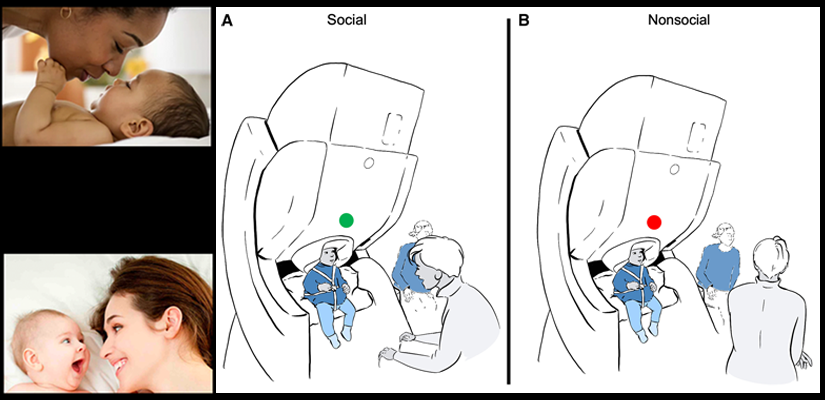
New insights into the neurobiology of language learning
Whether you’re in Tokyo, Madrid, or Seattle, seeing a parent interact with a baby produces a heartwarming scene – the parent uses a high-pitched voice (often called ‘parentese’), reacts positively to the baby’s babbling and gestures, and often makes eye contact and smiles. Babies are riveted by this “social ensemble.”
But why? Does this matter for the child’s development?
A new study published on April 8 in the journal Current Biology used modern brain science to help explore these questions. Researchers at the Institute for Learning & Brain Sciences (I-LABS) at the University of Washington used a safe and noninvasive brain-imaging technique (Magnetoencephalography or MEG) to monitor infant brain activity during social and nonsocial interactions with the same adult. They found that when the adult talked and played socially with a 5-month-old baby, the baby’s brain activity increased especially in regions responsible for attention. This ‘social’ condition was compared with a ‘nonsocial’ condition in which the adult turned away from the baby to talk to another person, and this showed lower activity in the same brain areas.
What do these changes in neural activity in the baby brain mean?
Co-author Andrew Meltzoff, a professor of psychology, says, “Two naturally occurring events that happen every day – adults engaging the baby and then turning to do something else – have different measurable effects on the baby brain. What’s more surprising is that an individual baby’s increased neural activity at 5 months of age to the social interaction predicts that baby’s enhanced language development at 5 later points in time, at 18, 21, 24, 27, and 30 months of age. The connection between early brain reactions and later language is consistent with scientists’ fascination with the early age period and opens up many new questions that we, and others, will be exploring.”
Read the article in the current issue of journal Current Biology.
